
Welwitschia
Grantee Reports
This page provides reports and other outputs from NCE-funded projects. Read about how to apply for a grant from NCE.
Surveying, catching and monitoring Black-footed cats (Felis nigripes) on Grünau Farms, Namibia and Benfontein Nature Reserve, South Africa in 2021
Grantee: Black-footed Cat Working Group
From: May 1, 2021
To: April 30, 2023
This project is part of a multidisciplinary effort to study the distribution, ecology, health, and reproduction of F. nigripes to collect long-term data. The aims are repeated captures of BFCs for biological sampling and radio-collaring for subsequent observation. Several methods like camera trapping, den monitoring, and focal animal surveys, were employed to survey areas previously known to hold BFCs. From November 2005 until the present, annual capture operations are conducted on BFN. From 2009 to 2018, annual captures were also conducted on two additional properties in the Upper Karoo, Northern Cape, close to the town of De Aar, before research ended on these properties in November 2018. In February 2020 we started with a new study area in southern Namibia. Eighteen reports are available detailing previous fieldwork for download as PDF on the website www.blackfooted-cat.wild-cat.org.
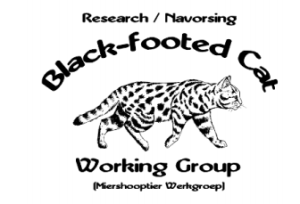
Second phase of the Namibian Cheetah Survey
Grantee: Cheetah Research Project, Leibniz Institute for Zoo and Wildlife Research
From: December 2, 2020
To: July 31, 2022
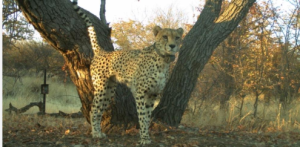
Highlighting the importance of the endemic plants of the Tsau//Khaeb (Sperrgebiet) National Park
Grantee: EnviroScience
From: February 1, 2020
To: September 30, 2020
The Tsau//Khaeb (Sperrgebiet) National Park covers 2.2 million ha of the Succulent Karoo biome in south-western Namibia. This is one of the most plant diverse regions of southern Africa. The park alone contains almost a quarter of all the plant species in Namibia. A high proportion of the plants in the park are endemic to the Succulent Karoo biome and at least 30 species occur only within the park. This places a particularly high responsibility on Namibia, and specifically on the MEFT park staff, to protect and safeguard these species and their habitat – no one else can do so. However, many of these endemic species are small succulents which are difficult to identify. It is important that the park staff in particular, but also visiting scientists, EIA practitioners, tourism operators and visitors to the park know the endemic plants of the area so as to ensure their long-term protection and welfare.
This project builds on the MEFT’s evolving Biodiversity Monitoring Framework which is increasingly using digital tools to make information available (e.g. electronic guides), to capture data, and share information. The outputs of this project are:
- A scientific publication on the endemic plants of the Tsau//Khaeb National Park in the on-line e-journal Namibian Journal of Environment: https://nje.org.na/index.php/nje/article/view/volume4-burke3;
- A full colour e-book entitled Endemic plants of the Sperrgebiet – a photographic guide with photos, descriptions and distribution maps, freely available on Namibia’s Environmental Information Service: http://the-eis.com/elibrary/search/23084;
- Four illustrated posters on the endemic plants of the park, also available on the EIS at the above link.
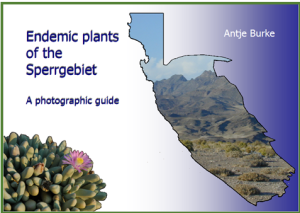
Kunene Lion Support Programme
Grantee: IRDNC
From: June 1, 2018
To: May 31, 2020
The thrust of IRDNC’s effort is to respond to escalating Human Lion Conflict (HLC) in the short-term whilst simultaneously developing long-term mitigating measures as well as exploring incentives for communities living with lion. This pressing need grows out of increasing human lion conflict (HLC) in North-west Namibia stemming from the success of Community-Based Natural Resource Management (CBNRM) in conserving the region’s unique desert-adapted lion population, linked to severe drought which has led to a decline in wildlife numbers. Increasing HLC is an urgent and immediate threat to Kunene’s lions and farmers’ livelihoods.
The Kunene Lion Support Programme can address these problems sustainably. It has been a very busy year, and the first two six-monthly reports illustrate this.
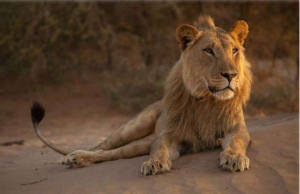
A baseline study of the critically endangered cave-dwelling catfish (Clarias cavernicola)
Grantee: Namibia Nature Foundation in association with MFMR, UNAM and the Norwegian Institute for Nature Research
From: August 1, 2018
To: July 31, 2019
This report summarizes the fieldwork done in 2019 and presents preliminary results of a baseline study of the critically endangered cave-dwelling catfish Clarias cavernicola. The aim is to document baseline information on this species, listed as Critically Endangered by the International Union for Conservation of Nature (IUCN), with the objective to developing measures to protect the species from extinction.
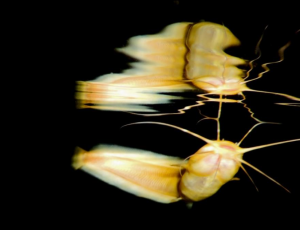
National Leopard Census Project
Grantee: Namibia Professional Hunting Association
From: May 31, 2018
To: May 31, 2019
A collaborative “National Census of Leopard” project is being implemented by NAPHA, the Ministry of Environment and Tourism, and the Large Carnivore Association of Namibia (LCMAN), with additional financial support via the Namibian Chamber of Environment. The recent IUCN Red Data List (2016) recategorised the conservation status of leopard globally, from Near Threatened to Vulnerable. This places greater significance on the need to better understand the status, population size and trends of the Namibian leopard population.
While the leopard has a broad geographical range in Namibia, from the Namib desert to the Zambezi woodlands, it is rarely seen. As a result, there is currently a limited amount of information available on which to base its conservation and management. This project takes a multi-disciplinary approach, inside and outside national parks, by combining ecological and social science approaches to understand the pressures on, and status of, the leopard population across Namibia.
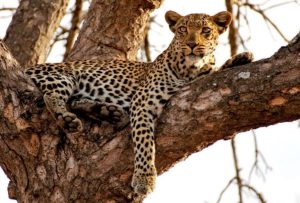
Developing and testing low cost sanitation solutions for Namibia’s informal settlements
Grantee: Development Workshop Namibia
From: May 1, 2018
To: April 30, 2019
This is a report on work in progress of the project ‘Developing and testing low cost sanitation solutions for Namibia’s informal settlements’. The report covers the first 6 months of the project.
The main objective of the report is to show project progress, especially in regard to the first set of project activities that were related to assessing sanitation solutions in Namibia and internationally. The report paves the way for the second phase of the project, with a focus on developing, constructing and modelling appropriate low-cost sanitation systems for urban low income residential areas.
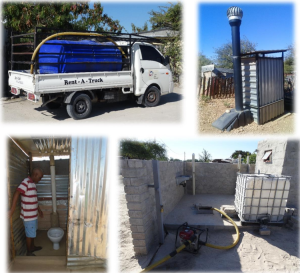
The use of palm leaves for basket-making in the Kavango East Region of Namibia – is it sustainable?
Grantee: Omba Arts Trust
From: December 1, 2017
To: February 28, 2018
The Omba Arts Trust embarked on a palm survey in the Kavango region at the end of 2017 and in early 2018, where they have been working since 1992. They also supported the planting of more than 1,000 Makalani Palm nuts in five community gardens and 40 Bird Plum (Berchemia discolor) tree seedlings, an important dye source, planted at the homestead gardens of basket weavers. This project was supported financially via the Namibian Chamber of Environment (NCE) by B2Gold Namibia and Total.
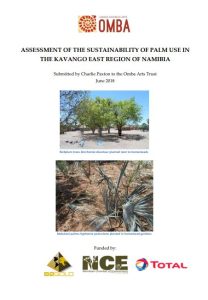
Informal settlements in Namibia: their nature and growth
Grantee: Development Workshop Namibia
From: January 1, 2017
To: November 30, 2017
On the 15th of November 2017, DW Namibia had their first publication book launch about addressing the housing crisis in Namibia's low-income urban resident community, called “Informal Settlements in Namibia: Their Nature and Growth” by Dr Beat Weber and Dr John Mendelsohn, with an attendance of over 80 stakeholders including Ministry of Urban and Rural Development, Ministry of Land and various municipal mayors from around the country.
Main ideas:
- The focus should shift from the provision of housing towards the provision of affordable land.
- The construction of houses should be in the hands of the residents, and they should be “allowed to build at their own pace, with a minimum of obstacles and a maximum of encouragement."
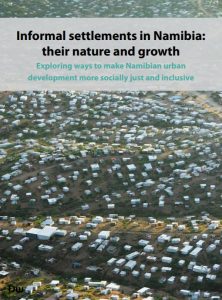

Surveying, catching and monitoring Black-footed cats (Felis nigripes) on Grünau Farms, Namibia and Benfontein Nature Reserve, South Africa in 2021
Grantee: Black-footed Cat Working Group
From: May 1, 2021
To: April 30, 2023
This project is part of a multidisciplinary effort to study the distribution, ecology, health, and reproduction of F. nigripes to collect long-term data. The aims are repeated captures of BFCs for biological sampling and radio-collaring for subsequent observation. Several methods like camera trapping, den monitoring, and focal animal surveys, were employed to survey areas previously known to hold BFCs. From November 2005 until the present, annual capture operations are conducted on BFN. From 2009 to 2018, annual captures were also conducted on two additional properties in the Upper Karoo, Northern Cape, close to the town of De Aar, before research ended on these properties in November 2018. In February 2020 we started with a new study area in southern Namibia. Eighteen reports are available detailing previous fieldwork for download as PDF on the website www.blackfooted-cat.wild-cat.org.

Second phase of the Namibian Cheetah Survey
Grantee: Cheetah Research Project, Leibniz Institute for Zoo and Wildlife Research
From: December 2, 2020
To: July 31, 2022

Highlighting the importance of the endemic plants of the Tsau//Khaeb (Sperrgebiet) National Park
Grantee: EnviroScience
From: February 1, 2020
To: September 30, 2020
The Tsau//Khaeb (Sperrgebiet) National Park covers 2.2 million ha of the Succulent Karoo biome in south-western Namibia. This is one of the most plant diverse regions of southern Africa. The park alone contains almost a quarter of all the plant species in Namibia. A high proportion of the plants in the park are endemic to the Succulent Karoo biome and at least 30 species occur only within the park. This places a particularly high responsibility on Namibia, and specifically on the MEFT park staff, to protect and safeguard these species and their habitat – no one else can do so. However, many of these endemic species are small succulents which are difficult to identify. It is important that the park staff in particular, but also visiting scientists, EIA practitioners, tourism operators and visitors to the park know the endemic plants of the area so as to ensure their long-term protection and welfare.
This project builds on the MEFT’s evolving Biodiversity Monitoring Framework which is increasingly using digital tools to make information available (e.g. electronic guides), to capture data, and share information. The outputs of this project are:
- A scientific publication on the endemic plants of the Tsau//Khaeb National Park in the on-line e-journal Namibian Journal of Environment: https://nje.org.na/index.php/nje/article/view/volume4-burke3;
- A full colour e-book entitled Endemic plants of the Sperrgebiet – a photographic guide with photos, descriptions and distribution maps, freely available on Namibia’s Environmental Information Service: http://the-eis.com/elibrary/search/23084;
- Four illustrated posters on the endemic plants of the park, also available on the EIS at the above link.

Kunene Lion Support Programme
Grantee: IRDNC
From: June 1, 2018
To: May 31, 2020
The thrust of IRDNC’s effort is to respond to escalating Human Lion Conflict (HLC) in the short-term whilst simultaneously developing long-term mitigating measures as well as exploring incentives for communities living with lion. This pressing need grows out of increasing human lion conflict (HLC) in North-west Namibia stemming from the success of Community-Based Natural Resource Management (CBNRM) in conserving the region’s unique desert-adapted lion population, linked to severe drought which has led to a decline in wildlife numbers. Increasing HLC is an urgent and immediate threat to Kunene’s lions and farmers’ livelihoods.
The Kunene Lion Support Programme can address these problems sustainably. It has been a very busy year, and the first two six-monthly reports illustrate this.

A baseline study of the critically endangered cave-dwelling catfish (Clarias cavernicola)
Grantee: Namibia Nature Foundation in association with MFMR, UNAM and the Norwegian Institute for Nature Research
From: August 1, 2018
To: July 31, 2019
This report summarizes the fieldwork done in 2019 and presents preliminary results of a baseline study of the critically endangered cave-dwelling catfish Clarias cavernicola. The aim is to document baseline information on this species, listed as Critically Endangered by the International Union for Conservation of Nature (IUCN), with the objective to developing measures to protect the species from extinction.

National Leopard Census Project
Grantee: Namibia Professional Hunting Association
From: May 31, 2018
To: May 31, 2019
A collaborative “National Census of Leopard” project is being implemented by NAPHA, the Ministry of Environment and Tourism, and the Large Carnivore Association of Namibia (LCMAN), with additional financial support via the Namibian Chamber of Environment. The recent IUCN Red Data List (2016) recategorised the conservation status of leopard globally, from Near Threatened to Vulnerable. This places greater significance on the need to better understand the status, population size and trends of the Namibian leopard population.
While the leopard has a broad geographical range in Namibia, from the Namib desert to the Zambezi woodlands, it is rarely seen. As a result, there is currently a limited amount of information available on which to base its conservation and management. This project takes a multi-disciplinary approach, inside and outside national parks, by combining ecological and social science approaches to understand the pressures on, and status of, the leopard population across Namibia.

Developing and testing low cost sanitation solutions for Namibia’s informal settlements
Grantee: Development Workshop Namibia
From: May 1, 2018
To: April 30, 2019
This is a report on work in progress of the project ‘Developing and testing low cost sanitation solutions for Namibia’s informal settlements’. The report covers the first 6 months of the project.
The main objective of the report is to show project progress, especially in regard to the first set of project activities that were related to assessing sanitation solutions in Namibia and internationally. The report paves the way for the second phase of the project, with a focus on developing, constructing and modelling appropriate low-cost sanitation systems for urban low income residential areas.

The use of palm leaves for basket-making in the Kavango East Region of Namibia – is it sustainable?
Grantee: Omba Arts Trust
From: December 1, 2017
To: February 28, 2018
The Omba Arts Trust embarked on a palm survey in the Kavango region at the end of 2017 and in early 2018, where they have been working since 1992. They also supported the planting of more than 1,000 Makalani Palm nuts in five community gardens and 40 Bird Plum (Berchemia discolor) tree seedlings, an important dye source, planted at the homestead gardens of basket weavers. This project was supported financially via the Namibian Chamber of Environment (NCE) by B2Gold Namibia and Total.

Informal settlements in Namibia: their nature and growth
Grantee: Development Workshop Namibia
From: January 1, 2017
To: November 30, 2017
On the 15th of November 2017, DW Namibia had their first publication book launch about addressing the housing crisis in Namibia's low-income urban resident community, called “Informal Settlements in Namibia: Their Nature and Growth” by Dr Beat Weber and Dr John Mendelsohn, with an attendance of over 80 stakeholders including Ministry of Urban and Rural Development, Ministry of Land and various municipal mayors from around the country.
Main ideas:
- The focus should shift from the provision of housing towards the provision of affordable land.
- The construction of houses should be in the hands of the residents, and they should be “allowed to build at their own pace, with a minimum of obstacles and a maximum of encouragement."
